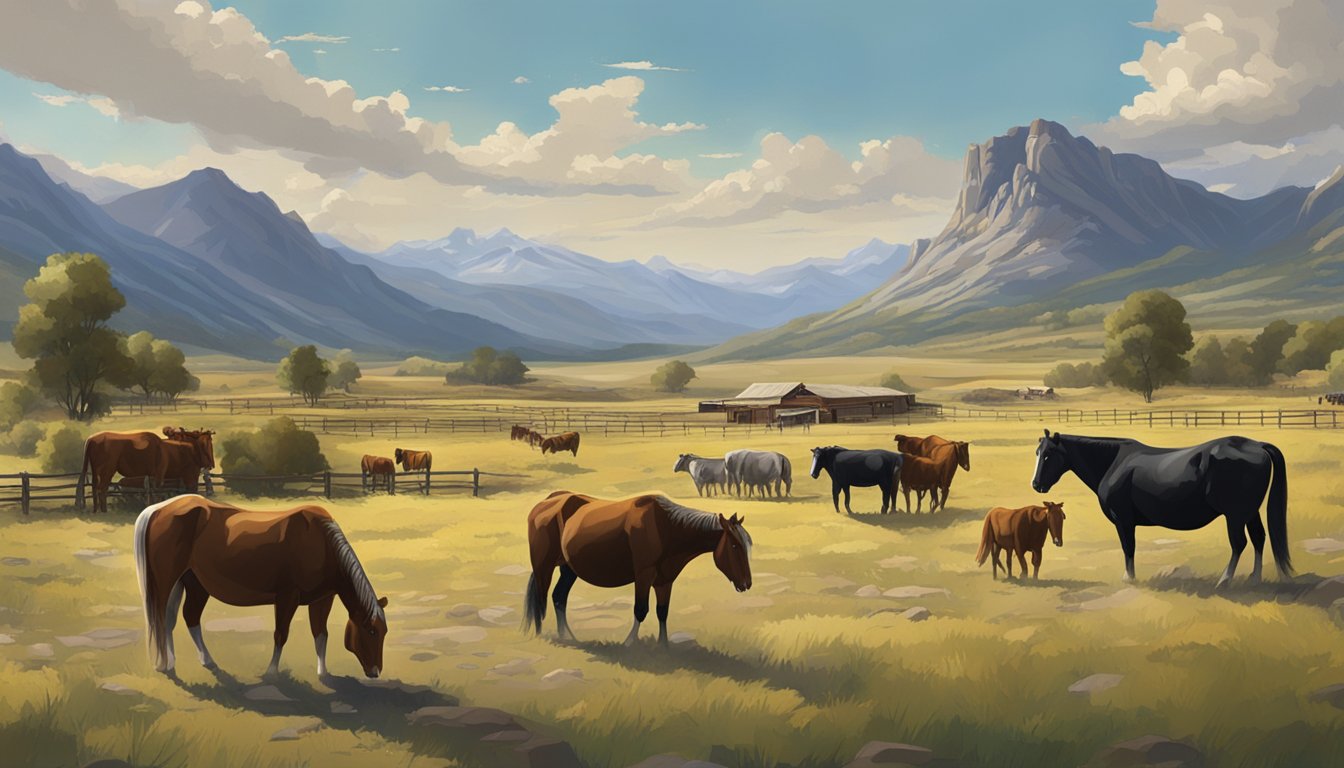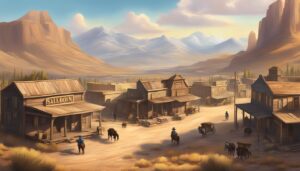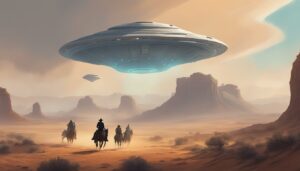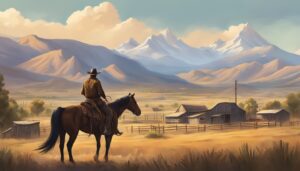Western TV shows have captivated audiences for decades with their tales of frontier life, gunfights, and rugged landscapes. Two notable series in this genre are Yellowstone and The Adventures of Brisco County, Jr. While both fall under the Western umbrella, they offer distinct experiences for viewers.
The Adventures of Brisco County, Jr. stands out as the superior Western TV series due to its unique blend of comedy, science fiction, and traditional Western elements. This short-lived gem from the early 1990s follows a Harvard-educated bounty hunter in 1893, combining witty humor with steampunk inventions and classic Western tropes. Its clever writing and entertaining performances set it apart from more conventional entries in the genre.
Yellowstone, on the other hand, brings the Western into the modern era. Set in present-day Montana, it explores conflicts between ranchers, land developers, and Native Americans. While it offers compelling drama and stunning visuals of the American West, it lacks the innovative charm and lighthearted appeal of Brisco County, Jr. Both shows have their merits, but Brisco County, Jr. ultimately provides a more enjoyable and memorable viewing experience for fans of television Westerns.
The Rise of Western TV Shows

Western television shows have captivated audiences for decades, transporting viewers to the rugged landscapes and dramatic narratives of the American frontier. These programs blend historical elements with fictional storytelling to create compelling entertainment.
Historical Context of Westerns
The Western genre emerged from America’s fascination with the Old West. Set primarily in the 19th century, these stories depict life on the frontier. Early Western TV shows like “Gunsmoke” and “Bonanza” portrayed idealized versions of frontier justice and cowboy heroism.
“The Lone Ranger” and “Rawhide” further popularized Western themes on television. These shows often romanticized the era, focusing on lawmen, gunslingers, and conflicts between settlers and Native Americans.
Evolution of the Western Genre on TV
Western TV shows have evolved significantly since their inception. Early series like “Cheyenne” and “Maverick” set the stage for more complex narratives. Modern Westerns like “Deadwood” and “Justified” explore darker themes and morally ambiguous characters.
“Hell on Wheels” delved into the construction of the transcontinental railroad, while “1883” serves as a prequel to “Yellowstone,” examining the Dutton family’s origins. These newer shows often blend Western elements with other genres, creating unique storytelling experiences.
Key Elements Defining Westerns
Western TV shows are characterized by specific elements that set them apart. These include:
- Frontier settings
- Conflicts between law and lawlessness
- Themes of individualism and self-reliance
- Iconic imagery (cowboys, horses, saloons)
- Exploration of American identity and values
Shows like “Longmire” and “F Troop” have adapted these elements to different time periods or incorporated humor. The enduring appeal of Westerns lies in their ability to reflect American myths and ideals while addressing universal human struggles.
Cultural Impact of Western Series

Western TV series have profoundly shaped American popular culture and collective imagination. These shows offer a window into the nation’s past while reflecting contemporary values and concerns.
Westerns as a Reflection of American History
Western TV shows draw heavily from the Old West era, romanticizing the American frontier experience. They often depict wagon trains, cowboys, and lawmen, capturing the spirit of exploration and taming the wilderness. These series serve as a cultural touchstone, connecting viewers to a shared national mythology.
Many Western shows blend historical facts with fictional narratives, creating a compelling portrayal of American history. They highlight themes of individualism, justice, and the clash between civilization and wilderness that resonate with audiences.
Western TV Shows in Modern Media
In recent years, Western series have experienced a resurgence in popularity. Shows like “Yellowstone” have reinvented the genre for contemporary audiences, addressing modern issues while maintaining traditional Western elements.
These new Westerns often explore complex themes such as land rights, family dynamics, and political power struggles. They attract diverse viewership and spark discussions about American identity and values.
Some Western series, like “The Adventures of Brisco County, Jr.,” have gained cult followings. These shows blend Western tropes with other genres, offering unique storytelling approaches that appeal to niche audiences.
Yellowstone: A Modern Take on Westerns
Yellowstone brings the Western genre into the 21st century with its contemporary storylines and complex characters. The show blends traditional Western elements with modern themes, creating a unique viewing experience.
Yellowstone’s Story and Influence
Yellowstone follows the Dutton family as they fight to protect their vast ranch in Montana. The show explores land disputes, political conflicts, and family dynamics against a backdrop of stunning landscapes. Its success has sparked a resurgence of interest in Western-themed television.
Yellowstone’s popularity has led to high viewership ratings and critical acclaim. The series is available on various streaming platforms, including Amazon Prime and Hulu. Its influence extends beyond entertainment, shaping perceptions of modern ranch life and the American West.
Character Dynamics and Development
The show’s characters are multifaceted and evolve throughout the series. John Dutton, played by Kevin Costner, leads the family with a mix of traditional values and pragmatic decision-making. His children – Beth, Jamie, and Kayce – each struggle with their own conflicts and loyalties.
Tate, John’s grandson, represents the next generation of Duttons. His character arc explores the challenges of growing up in a complex family dynamic. The series also delves into the lives of ranch hands and Native American characters, presenting a diverse cast that reflects the realities of the modern West.
The Adventures of Brisco County, Jr.: Western with a Twist

The Adventures of Brisco County, Jr. blended classic Western elements with science fiction, humor, and steampunk aesthetics. This unique combination set it apart from traditional Westerns, offering viewers a fresh take on the genre.
Plot Synthesis and Unique Features
The show followed Harvard-educated lawyer-turned-bounty hunter Brisco County, Jr., played by Bruce Campbell. Set in 1893, Brisco pursued outlaws while investigating futuristic technology and mysterious artifacts. The series featured a mix of Western action, comedy, and sci-fi elements.
Key characters included Lord Bowler, Brisco’s rival-turned-partner, and the villainous John Bly. Professor Wickwire, an eccentric inventor, introduced anachronistic gadgets that added a steampunk flair. The mysterious Orb, a powerful device sought by various factions, drove much of the overarching plot.
The show’s tongue-in-cheek humor and self-awareness set it apart from more serious Westerns. It often parodied genre tropes while still delivering exciting action sequences and compelling storylines.
Contributions to the Sci-Fi Western Subgenre
The Adventures of Brisco County, Jr. helped popularize the Weird West subgenre, blending Western and science fiction elements. It paved the way for later shows that mixed genres, such as Firefly and Westworld.
The series incorporated steampunk aesthetics before the term was widely known, featuring advanced technology with a Victorian-era twist. This approach influenced later works in both television and literature.
Despite its short run, the show gained a cult following and is remembered for its innovative approach to the Western genre. It demonstrated that Westerns could be fun, adventurous, and incorporate elements from other genres while still respecting the core tenets of the Western tradition.
Comparing Key Aspects

Yellowstone and The Adventures of Brisco County, Jr. represent distinct approaches to Western TV series. Their differences span narrative style, character development, visual aesthetics, and audience reception.
Narrative and Theme
Yellowstone explores modern ranching conflicts in Montana. The show tackles land disputes, political intrigue, and family dynamics. Its narrative is gritty and complex, reflecting contemporary issues in the American West.
The Adventures of Brisco County, Jr. blends Western and sci-fi elements. Set in 1893, it follows a Harvard-educated bounty hunter on a quest to capture outlaws. The series incorporates steampunk gadgets and time travel concepts. Its tone is lighter, with comedic elements balancing adventure.
Both shows use the Western setting to explore broader themes. Yellowstone examines power, legacy, and the changing face of the American frontier. Brisco County Jr. focuses on progress, innovation, and the clash between old and new.
Characterization and Casting
Yellowstone boasts a star-studded cast led by Kevin Costner. Characters are morally ambiguous, with complex motivations and relationships. The Dutton family members are deeply flawed but fiercely loyal to their land and legacy.
Brisco County Jr. features Bruce Campbell as the charismatic titular character. The cast includes colorful supporting characters like Lord Bowler and Professor Wickwire. Characters tend to be more archetypal, fitting Western tropes with a comedic twist.
Both shows excel in creating memorable characters. Yellowstone’s ensemble cast allows for deep exploration of multiple storylines. Brisco County Jr. relies more on its lead’s charm and the chemistry between recurring characters.
Cinematography and Music
Yellowstone is known for its stunning visuals of the Montana landscape. Wide shots capture the beauty and vastness of ranch territories. The cinematography emphasizes the land’s importance to the story.
Brisco County Jr. employs a more traditional Western visual style. It includes classic elements like wagon trains and frontier towns. The show’s sci-fi aspects are integrated through unique props and set designs.
Music plays a crucial role in both series. Yellowstone’s score, composed by Brian Tyler, enhances the show’s dramatic moments. Brisco County Jr.’s theme, created by Randy Edelman, became iconic and was later used in Olympic broadcasts.
Cultural and Critical Reception
Yellowstone has achieved massive popularity, particularly in middle America. It’s praised for its portrayal of modern Western issues and strong performances. The show has sparked interest in ranch life and Western fashion.
Brisco County Jr., despite its short run, gained a cult following. Fans appreciate its unique blend of genres and Campbell’s performance. Critics lauded its creativity, though it didn’t achieve mainstream success during its original airing.
Both shows have influenced TV Westerns. Yellowstone’s success has led to several spin-offs and renewed interest in the genre. Brisco County Jr. is remembered fondly for its innovative approach to Western storytelling.
Legacy and Longevity of the Shows

Yellowstone and The Adventures of Brisco County, Jr. have left distinct marks on television history. Their impacts extend beyond their original runs, influencing fans and future productions in unique ways.
Fandom and Community Engagement
Yellowstone has cultivated a massive fan base since its 2018 debut. Online forums and social media groups dedicated to the show have thousands of members discussing plot theories and character developments. Fan conventions and themed events have sprung up, allowing viewers to immerse themselves in the Dutton family’s world.
The Adventures of Brisco County, Jr., despite its short run, gained a cult following. Fan-organized viewing parties and memorabilia collections keep the show’s spirit alive. Online communities celebrate the blend of Western and science fiction elements that made the series unique.
Impact on Future TV Productions
Yellowstone’s success has sparked a resurgence in Western-themed television. The show’s gritty portrayal of modern ranch life has influenced storytelling in subsequent productions. Its popularity led to spin-offs like 1883, expanding the Dutton family saga across different time periods.
Brisco County, Jr. pioneered the fusion of genres in television. Its mix of Western, science fiction, and comedy elements paved the way for more experimental shows. The series demonstrated that unconventional storytelling could find an audience, inspiring future creators to take risks with genre-blending concepts.



